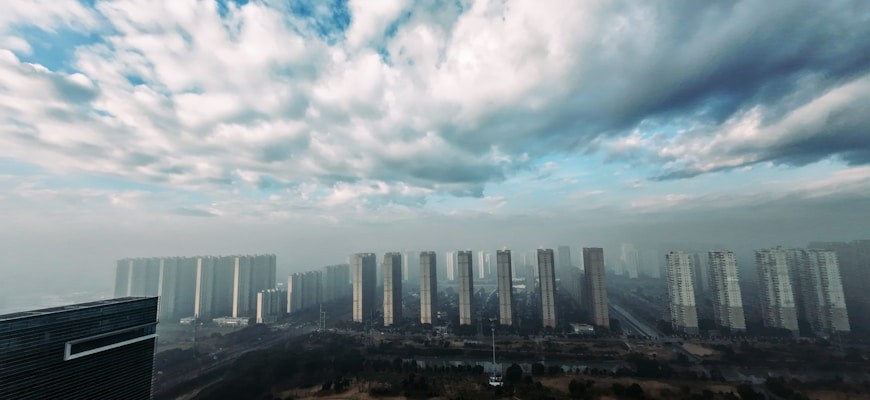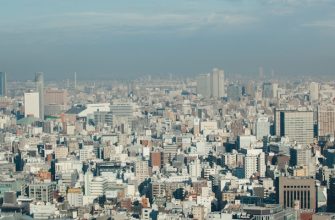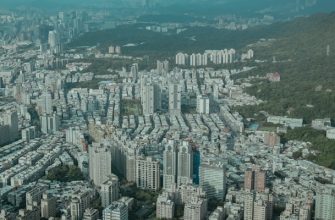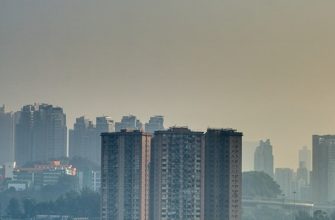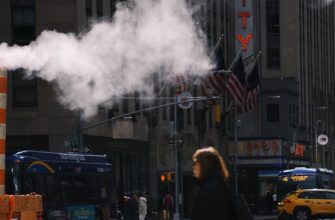- Innovative Air Purification Technologies for Urban Environments
- The Role of Green Spaces in Enhancing Urban Air Quality
- Sustainable Practices to Combat Air Pollution in Megacities
- Community Initiatives for Cleaner Air: A Collective Effort
- The Impact of Urban Design on Air Quality and Public Health
- Future Trends in Air Purification: Towards Sustainable Megacities
Innovative Air Purification Technologies for Urban Environments
Innovative air purification technologies play a crucial role in enhancing urban environments, particularly in megacities where air quality is often compromised. These advanced systems are designed to combat pollution, improve overall air quality, and promote healthier living conditions. By harnessing cutting-edge solutions, urban areas can significantly reduce harmful airborne particles, thereby fostering a more harmonious relationship with nature.
- Photocatalytic systems: Utilizing light-activated catalysts, these technologies convert harmful pollutants into harmless substances, effectively purifying the air.
- Biofiltration: This natural process employs living organisms, such as plants and microbes, to filter and clean the air, enhancing biodiversity in urban settings.
- Electrostatic precipitators: These devices use electric charges to capture particulate matter from the air, ensuring that urban environments remain cleaner and healthier.
- Smart air quality monitoring: Integrating IoT technology, these systems continuously track air quality levels, providing real-time data to inform and improve purification strategies.
By implementing these innovative air purification technologies, cities can address the pressing challenges of pollution and health risks associated with urban living. Enhanced air quality not only benefits the residents but also contributes to the overall sustainability of urban ecosystems. As cities adopt these advanced solutions, a future in which urban environments harmoniously coexist with nature becomes increasingly attainable.
Furthermore, collaboration between government agencies, private sectors, and communities is essential in promoting these technologies. Public awareness campaigns can encourage the adoption of air purification systems, ensuring that residents actively participate in the quest for cleaner air. As urban populations continue to grow, the importance of innovative air purification methods will only increase, making it a top priority for city planners and environmentalists alike.
The Role of Green Spaces in Enhancing Urban Air Quality
Green spaces play a crucial role in improving urban air quality, acting as natural filters that absorb pollutants and release oxygen. In megacities, where dense populations contribute to significant air contamination, the presence of parks, gardens, and urban forests becomes increasingly vital. These natural areas not only enhance the aesthetic appeal of cities but also provide essential environmental benefits.
- Pollutant Absorption: Plants in green spaces effectively absorb harmful substances such as carbon dioxide, sulfur dioxide, and nitrogen oxides. This capability significantly reduces the concentration of these pollutants in the air.
- Oxygen Production: Through the process of photosynthesis, trees and plants generate oxygen, which is essential for human health. An increase in urban greenery directly correlates with improved air quality and respiratory health.
- Temperature Regulation: Urban heat islands can elevate temperatures in megacities, worsening air quality. Green spaces help mitigate this effect by providing shade and releasing moisture into the atmosphere, leading to cooler air.
- Noise Reduction: Green areas also act as sound barriers, lessening noise pollution, which is often overlooked but significantly impacts urban living conditions and overall well-being.
The incorporation of green spaces in urban planning is not just about beautification; it is a strategic approach to combat air quality issues in megacities. Urban areas that prioritize the development and maintenance of parks and green belts consistently report lower levels of air pollution and higher quality of life for residents.
Moreover, engaging communities in the care of these green spaces fosters a sense of ownership, encouraging sustainable practices that further enhance urban air quality. Initiatives such as tree planting and community gardens not only contribute to cleaner air but also promote biodiversity, creating habitats for various species.
In conclusion, the promotion of green spaces is essential for improving air quality in megacities. By investing in and expanding these natural areas, cities can achieve a harmonious balance with nature, leading to healthier environments and enhanced quality of life for their inhabitants.
Sustainable Practices to Combat Air Pollution in Megacities
Air pollution in megacities has become a pressing issue, necessitating the implementation of sustainable practices to combat this environmental challenge. Various strategies can significantly improve air quality, ensuring a healthier urban environment. Innovations in technology, combined with community engagement, play a crucial role in these efforts.
- Green Spaces: Increasing urban greenery can effectively absorb pollutants, providing a natural means of air purification. Parks, vertical gardens, and green rooftops contribute to reducing the urban heat island effect while enhancing air quality.
- Public Transportation: Promoting the use of public transit systems minimizes reliance on personal vehicles. Investments in eco-friendly transportation options, such as electric buses and bike-sharing programs, can drastically lower emissions.
- Renewable Energy: Transitioning from fossil fuels to renewable energy sources, such as solar and wind power, can reduce the carbon footprint of megacities. This shift not only helps in air quality improvement but also promotes sustainable living practices.
- Regulation and Policy: Implementing stricter regulations on industrial emissions and vehicular pollution is essential. Policies that encourage cleaner production methods and incentivize the use of low-emission vehicles contribute to a significant decrease in air contaminants.
- Community Initiatives: Engaging local communities in awareness campaigns about air quality and pollution prevention fosters a culture of sustainability. Workshops, clean-up drives, and educational programs can empower citizens to take action.
Incorporating these sustainable practices not only aids in combating air pollution in megacities but also promotes a harmonious relationship with nature. The collective effort of individuals, businesses, and governments can lead to meaningful change, ensuring cleaner air for future generations.
Community Initiatives for Cleaner Air: A Collective Effort
In urban environments, community initiatives play a vital role in promoting cleaner air and combating pollution. Collective efforts can significantly enhance air quality, fostering a healthier atmosphere for residents. By engaging local populations in various programs and projects, cities can empower citizens to take action towards air purification.
Community-driven campaigns often focus on several key areas:
- Tree planting initiatives, which help absorb pollutants and release oxygen, contributing to overall air purification.
- Awareness programs that educate residents about the importance of reducing vehicle emissions and adopting sustainable transportation methods.
- Collaboration with local businesses to promote eco-friendly practices and reduce industrial emissions, further supporting cleaner air.
- Organizing clean-up drives that not only beautify neighborhoods but also reduce sources of air pollution, such as litter and waste.
- Implementing community gardens that not only enhance local greenery but also encourage biodiversity and improve air quality.
Successful community initiatives require active participation and collaboration among residents, local governments, and environmental organizations. By fostering a sense of shared responsibility, cities can create a collective momentum towards cleaner air. These efforts not only address immediate air quality issues but also instill a culture of sustainability and environmental stewardship among citizens.
By supporting and participating in these community initiatives, individuals contribute to a larger movement aimed at enhancing air quality in megacities. Every small action counts, and together, these initiatives pave the way for a healthier urban lifestyle and a more harmonious relationship with nature.
The Impact of Urban Design on Air Quality and Public Health
Urban design plays a crucial role in determining air quality and, consequently, public health in megacities. The arrangement of buildings, transportation systems, and green spaces directly influences the levels of pollution in densely populated areas. Effective urban planning can significantly reduce air contaminants, thereby enhancing the overall well-being of residents.
One of the primary factors affecting air quality in urban environments is the presence of vegetation. Green spaces, parks, and urban forests act as natural air purifiers, absorbing carbon dioxide and releasing oxygen. These areas also capture particulate matter from the air, reducing the concentration of pollutants. Integrating more greenery into urban design not only improves air quality but also promotes physical and mental health among city dwellers.
- Transportation Systems: The design of public transport networks can minimize reliance on private vehicles, leading to lower emissions of harmful gases.
- Mixed-Use Developments: Placing residential areas close to workplaces and recreational facilities encourages walking and cycling, reducing the carbon footprint of daily commutes.
- Pollution Control Measures: Urban design can incorporate features like air quality monitoring stations and green walls, which actively filter pollutants from the air.
Moreover, effective urban design fosters community engagement and awareness regarding air quality issues. When residents are informed about their environment, they are more likely to participate in initiatives aimed at improving air quality. Educational programs and community-driven projects can lead to a collective effort in advocating for cleaner air and healthier lifestyles.
In conclusion, the relationship between urban design, air quality, and public health is evident. By prioritizing sustainable practices in city planning, it is possible to create healthier living conditions and contribute to the overall harmony between urban life and nature. The integration of innovative solutions in urban environments will not only purify the air but also enhance the quality of life for millions of people residing in megacities.
Future Trends in Air Purification: Towards Sustainable Megacities
The future of air purification in megacities is poised to undergo significant transformations driven by technological advancements and a growing emphasis on sustainability. As urban populations expand, the demand for effective air purification systems becomes critical to improve air quality and enhance public health. Innovations in air purification technologies are expected to play a vital role in creating cleaner, healthier urban environments.
- Integration of Green Technologies: The incorporation of green technologies, such as biofiltration and phytoremediation, is anticipated to gain momentum. These natural methods utilize plants and microorganisms to purify air, promoting ecological balance in urban settings.
- Smart Air Quality Monitoring: Advanced sensors and IoT devices will provide real-time data on air quality. This information will enable cities to implement targeted air purification strategies, ensuring that pollution levels are continually monitored and addressed.
- Renewable Energy Sources: The shift towards renewable energy will power air purification systems, reducing the carbon footprint associated with traditional methods. Solar-powered air purifiers and wind-driven filtration systems are likely to emerge as sustainable solutions.
- Community Engagement: Involving local communities in air quality initiatives will foster a sense of responsibility and awareness. Educational programs and citizen science projects can empower residents to participate actively in air purification efforts.
- Urban Design Innovations: Future urban planning will consider air purification as a fundamental aspect. Designing green spaces, vertical gardens, and urban forests will contribute to natural air filtration, enhancing the overall environment.
As megacities evolve, the integration of these trends into air purification strategies will be essential. The focus on sustainability, public health, and community involvement will shape the next generation of air quality management systems, ensuring that urban environments harmonize with nature. By embracing these future trends, cities can work towards achieving cleaner air and a healthier population.
